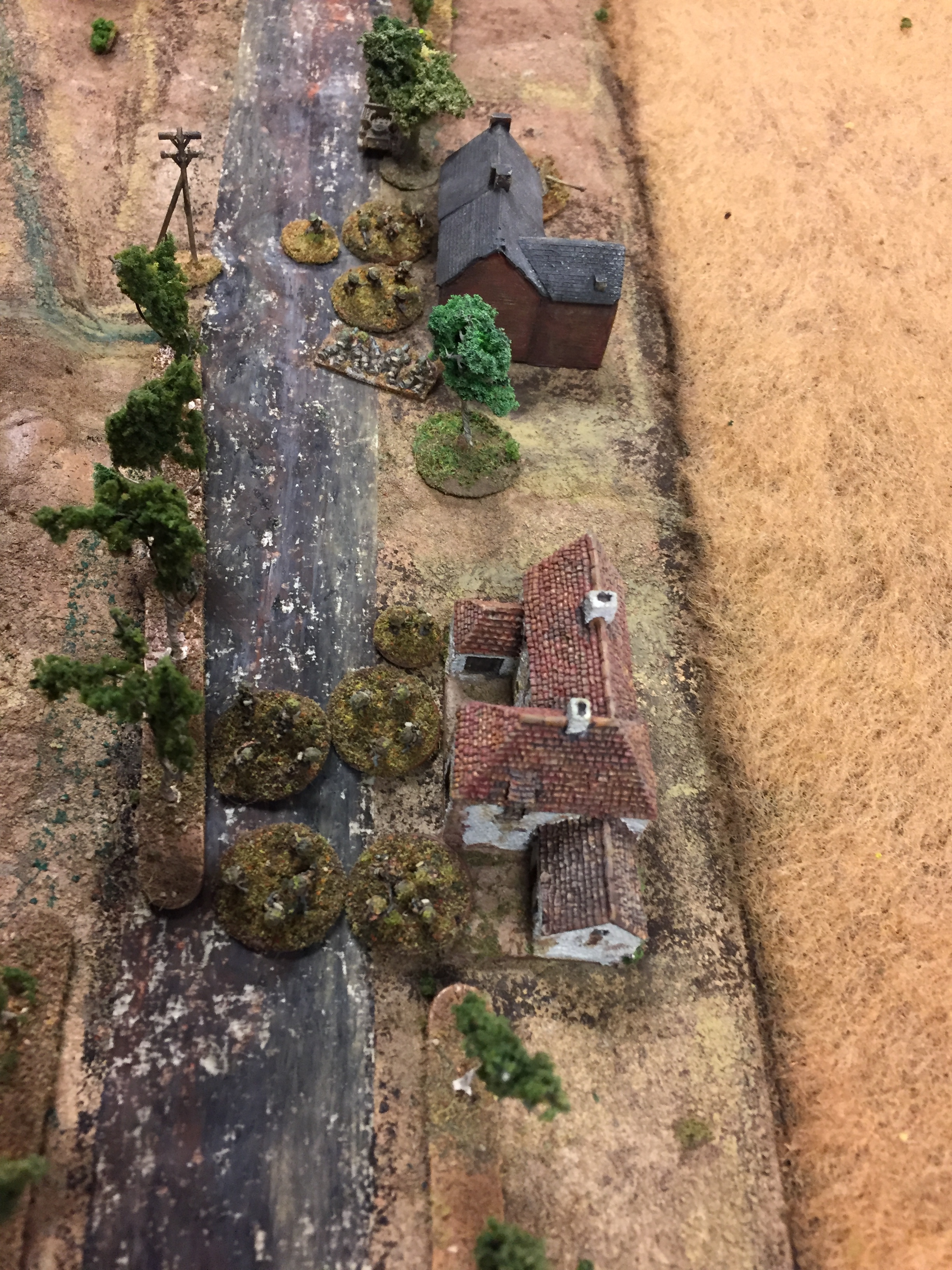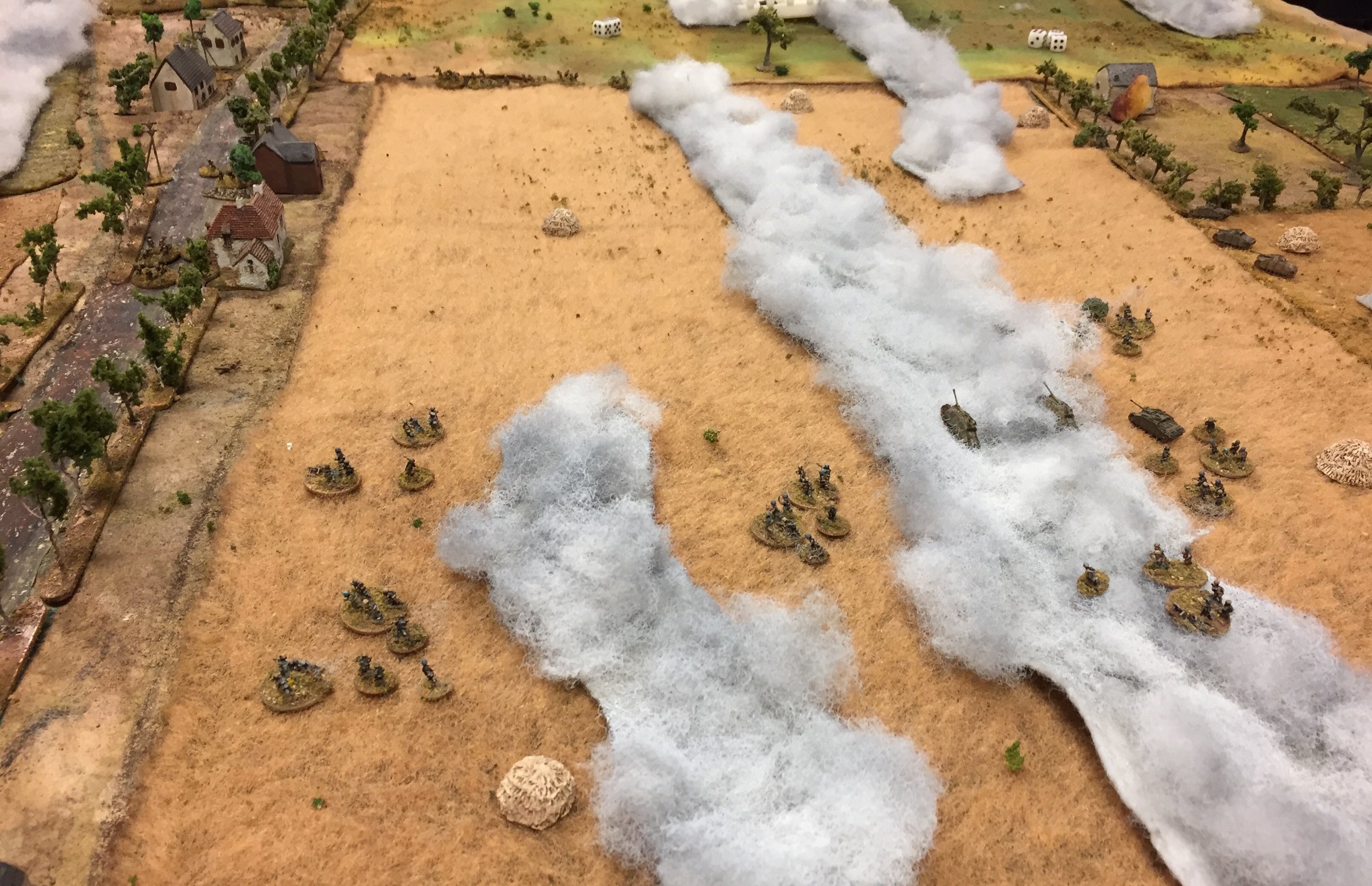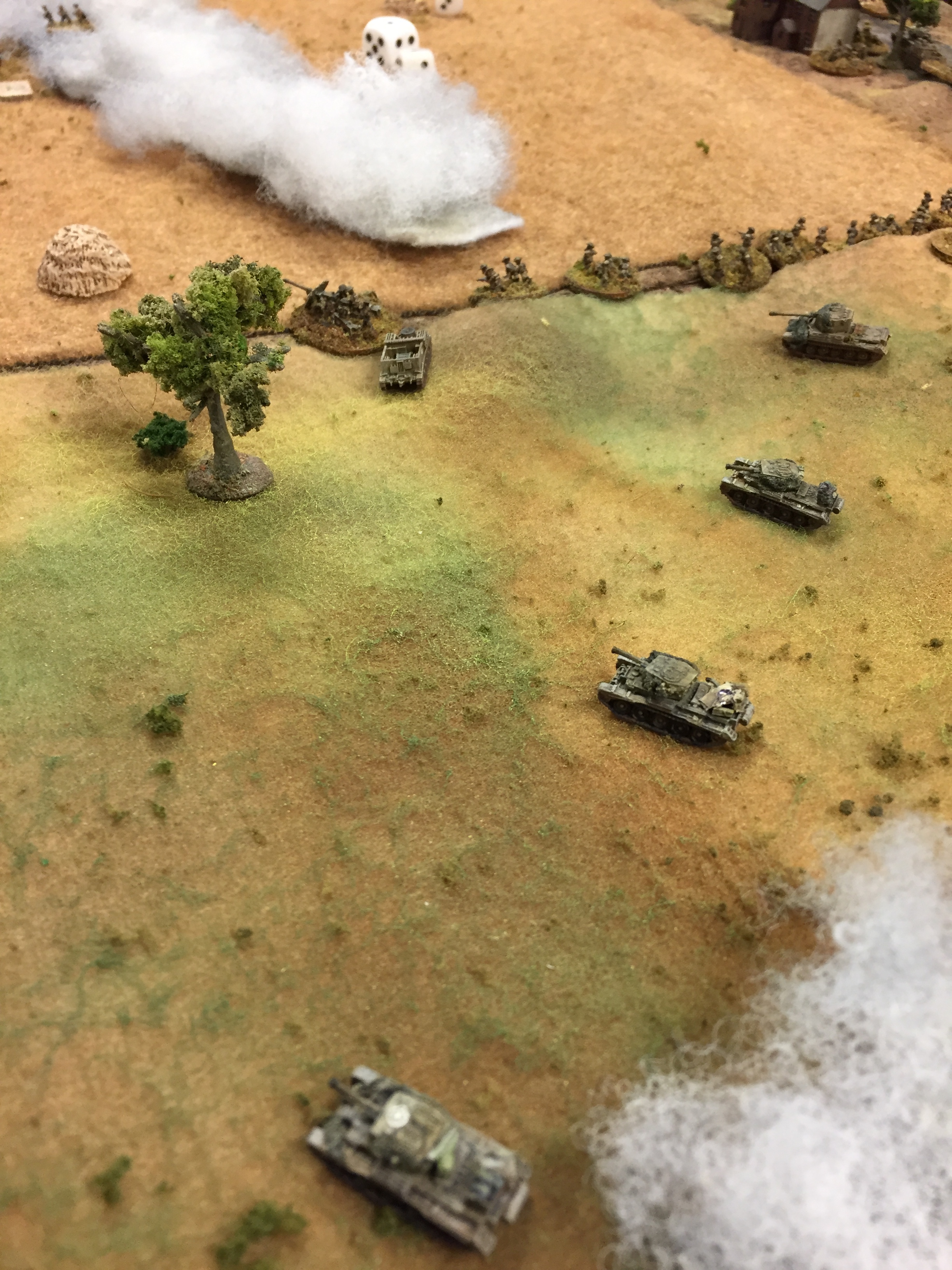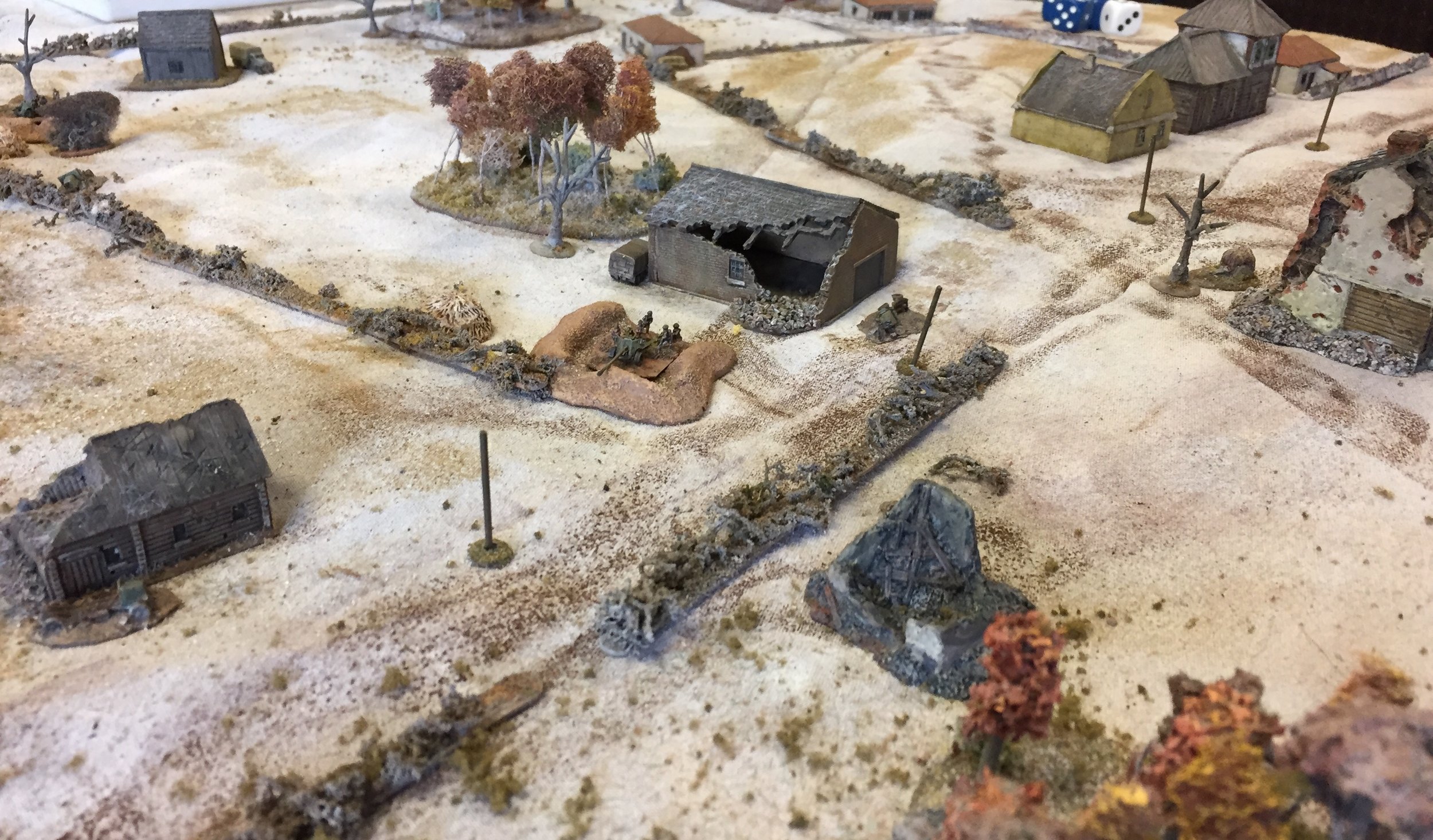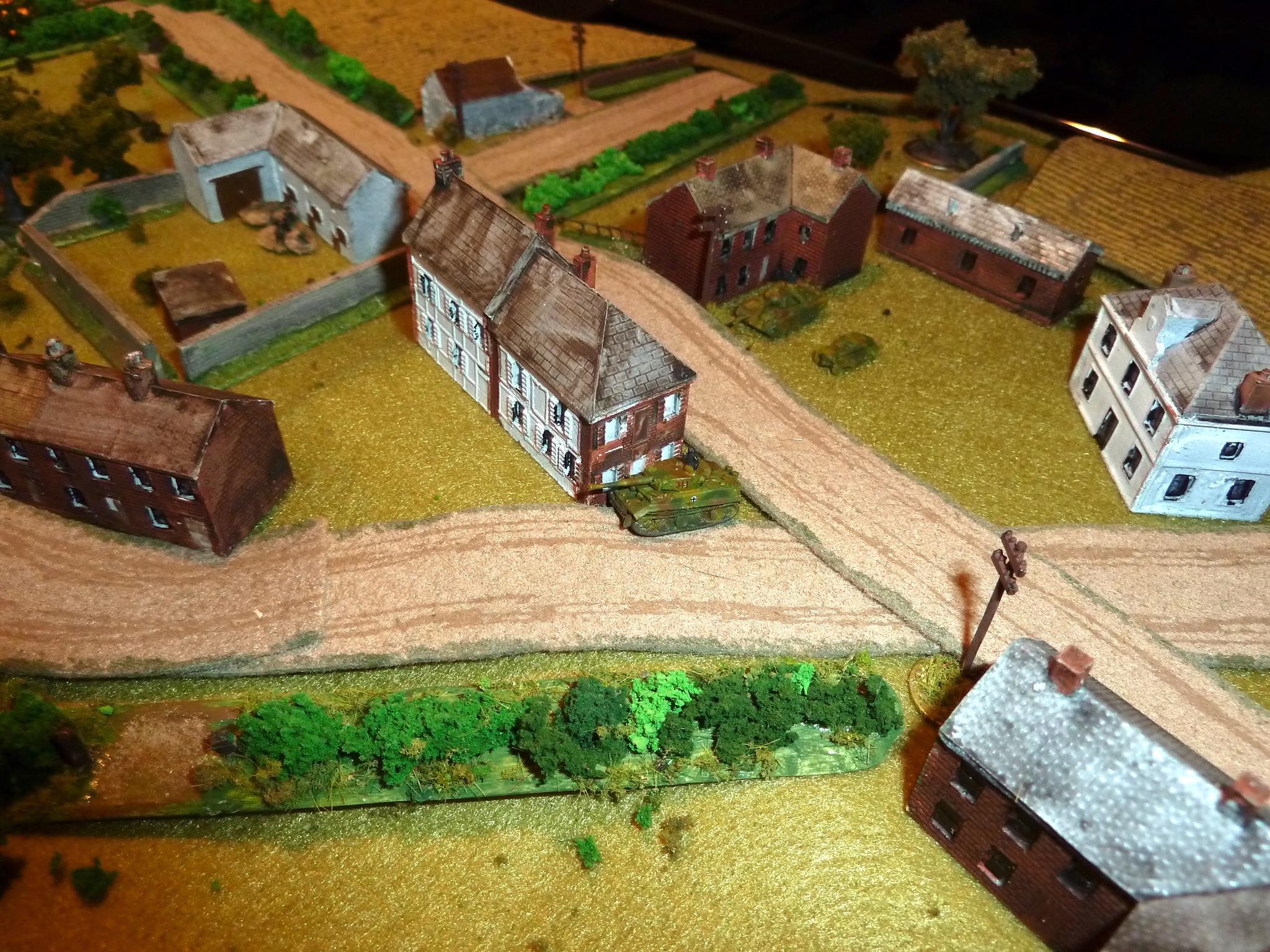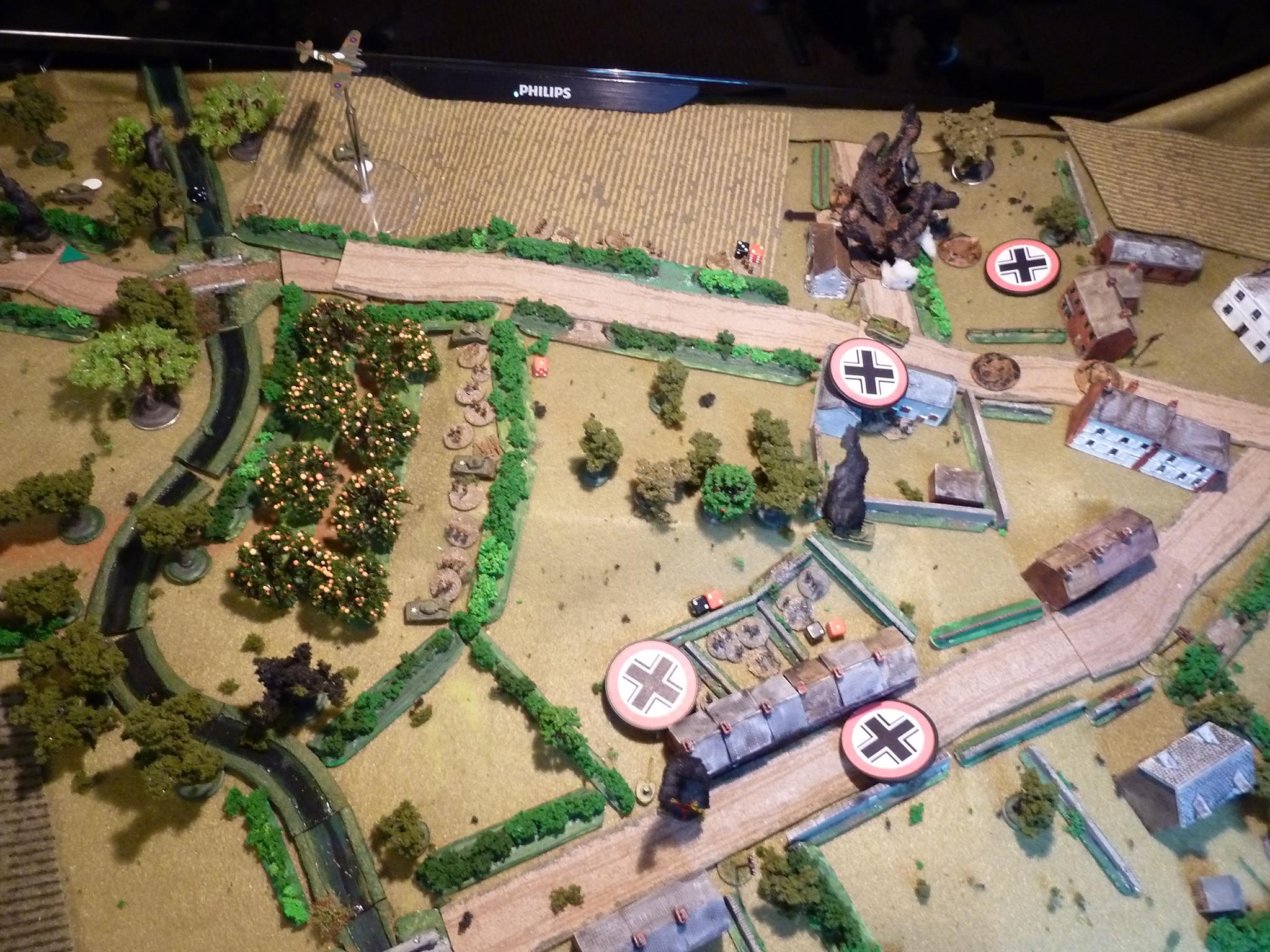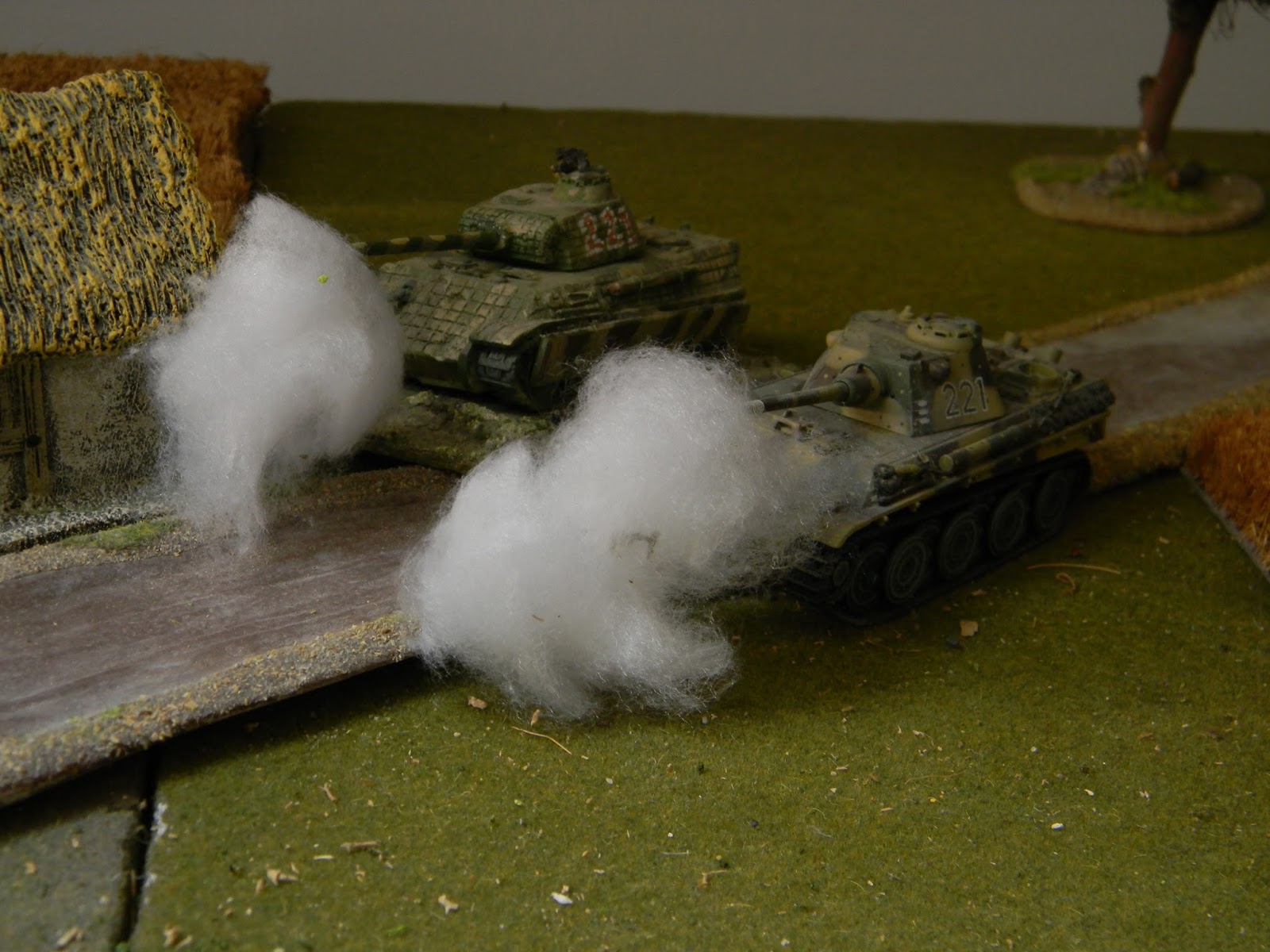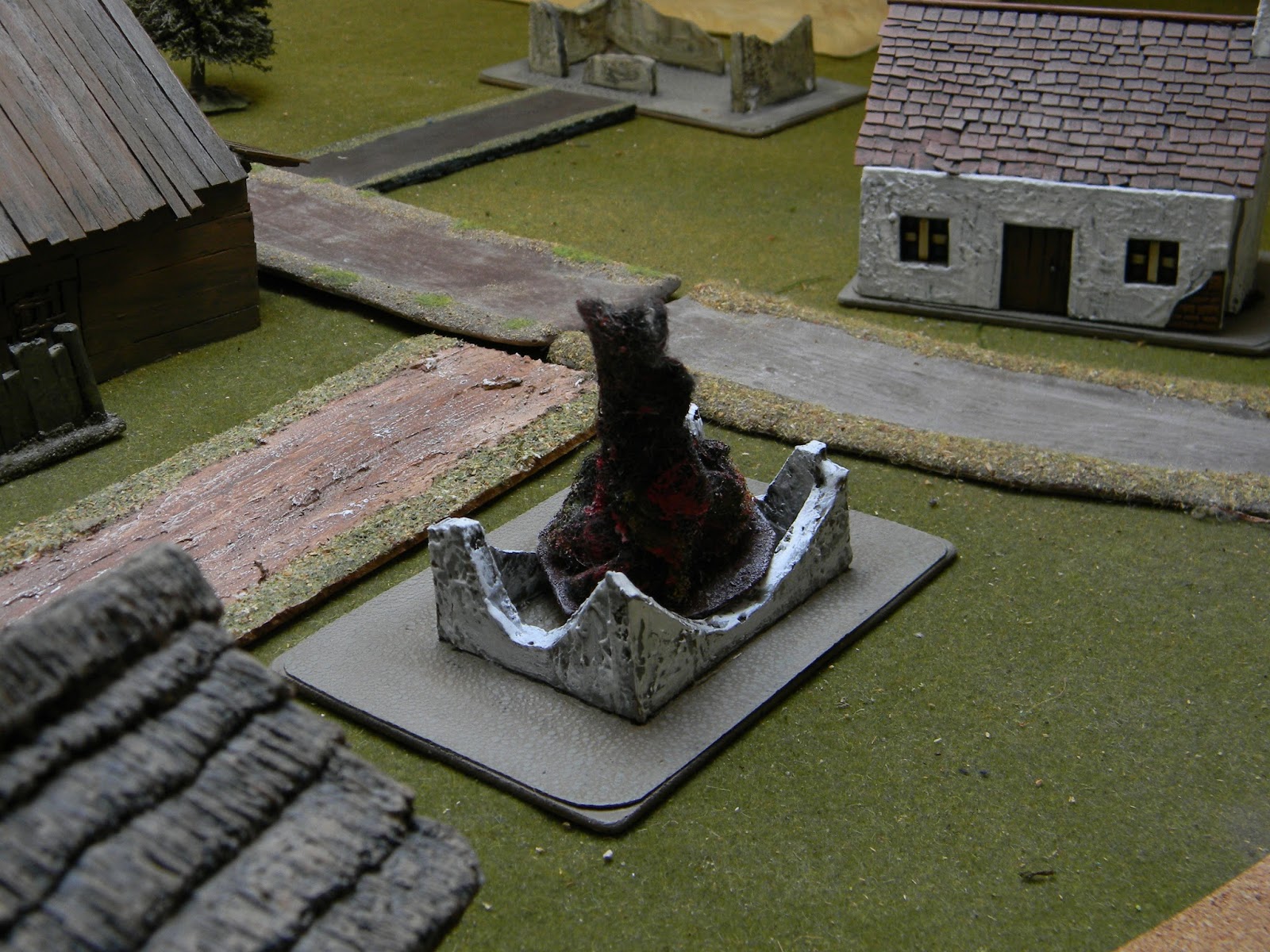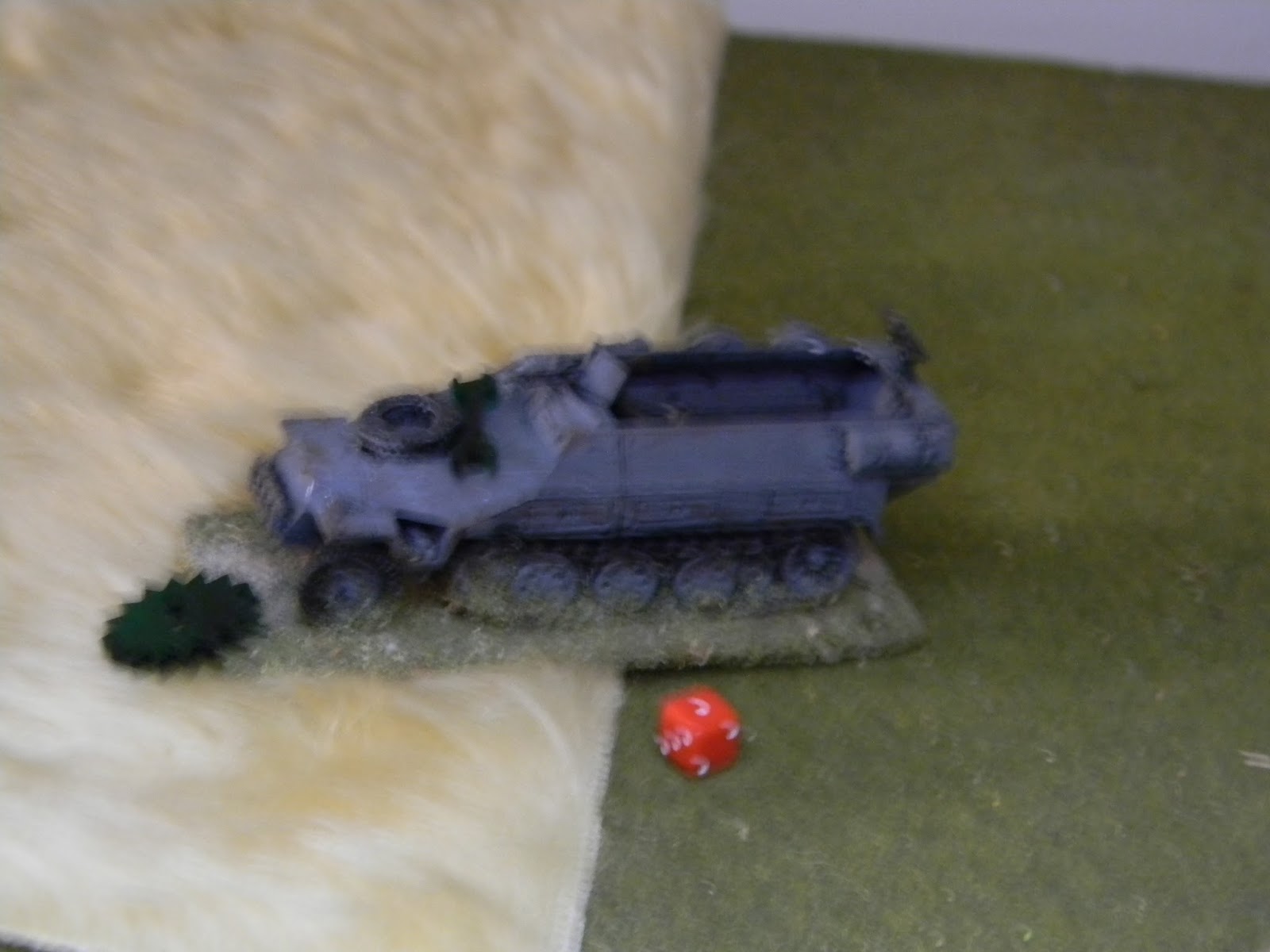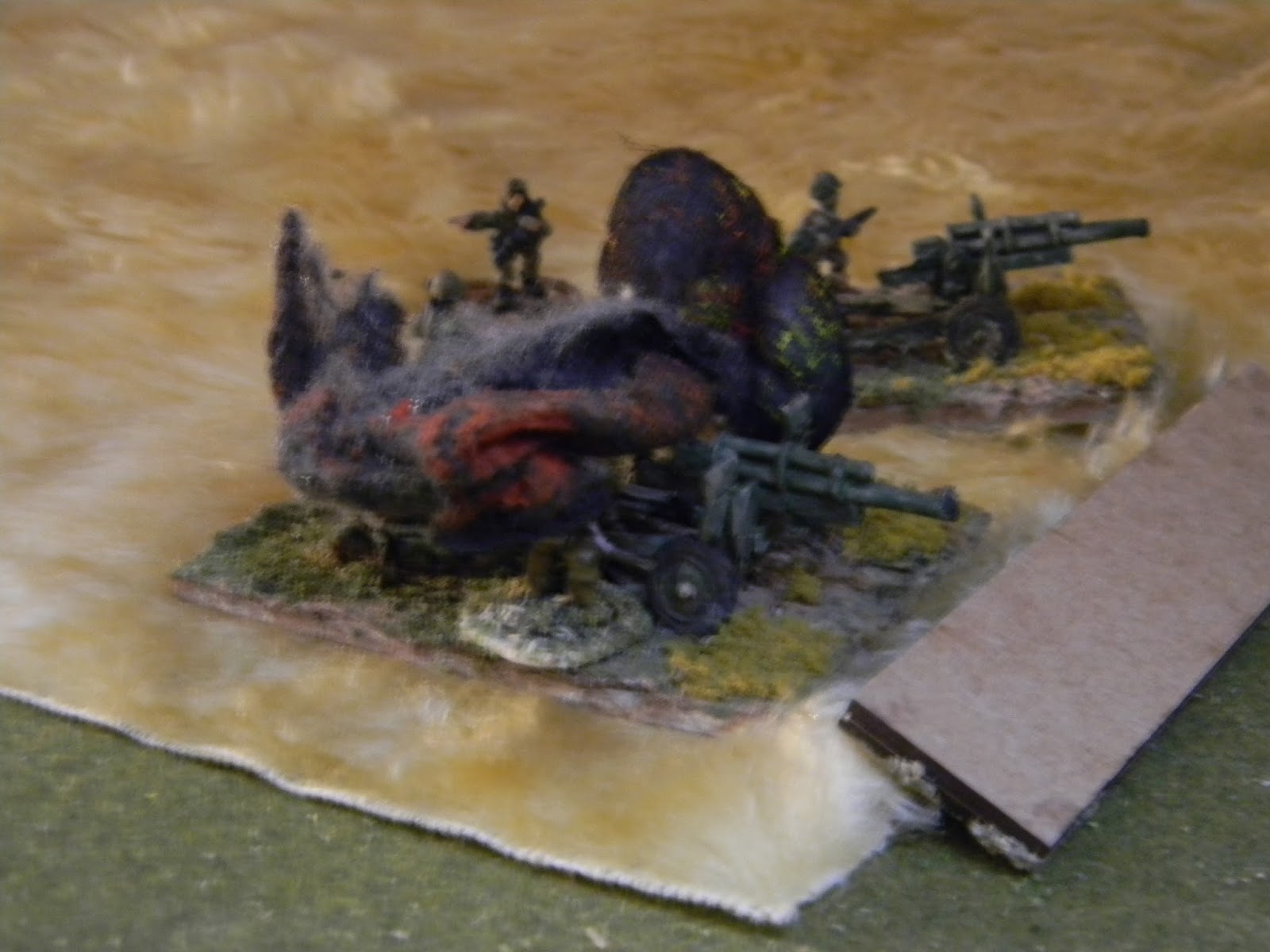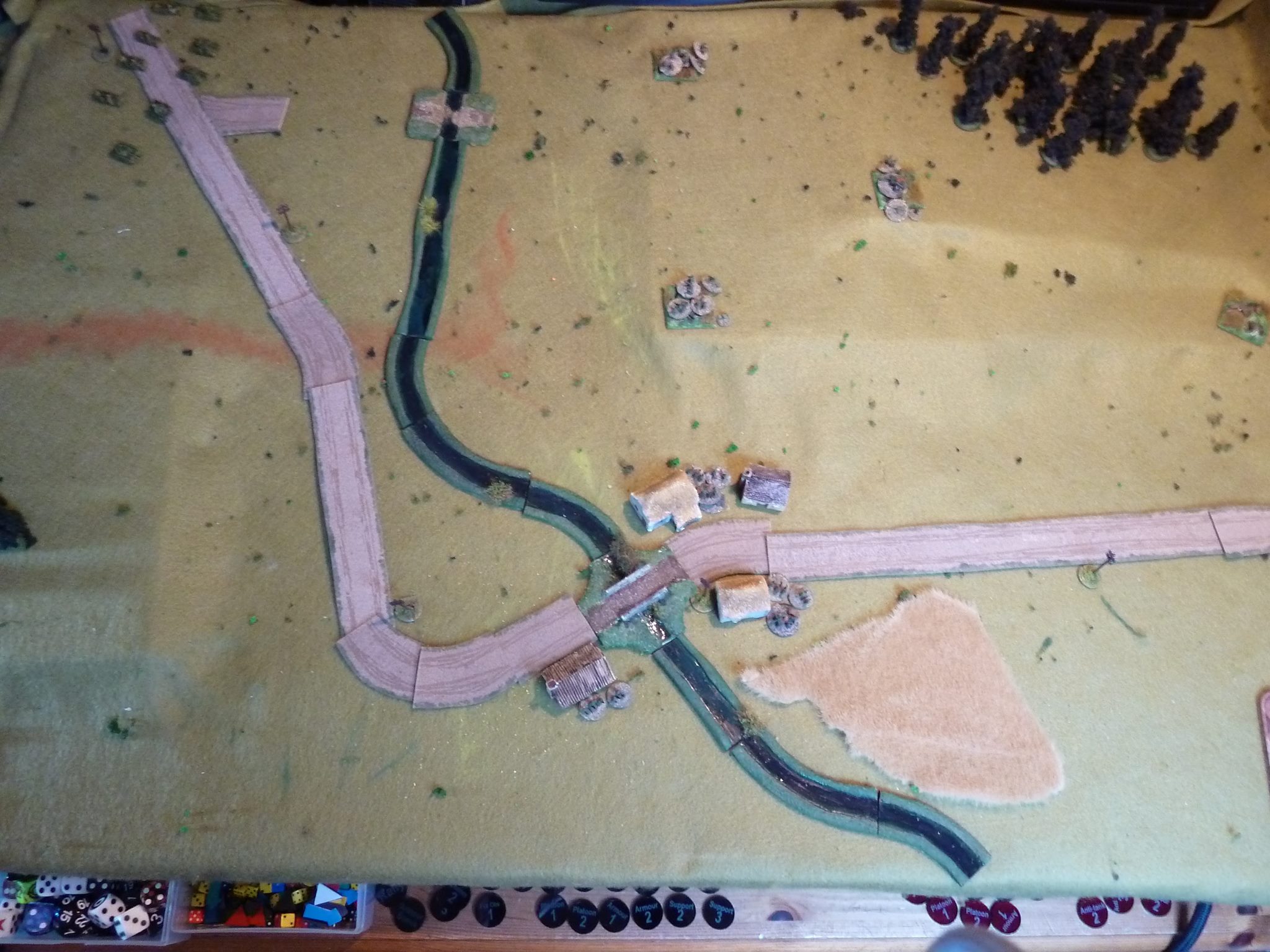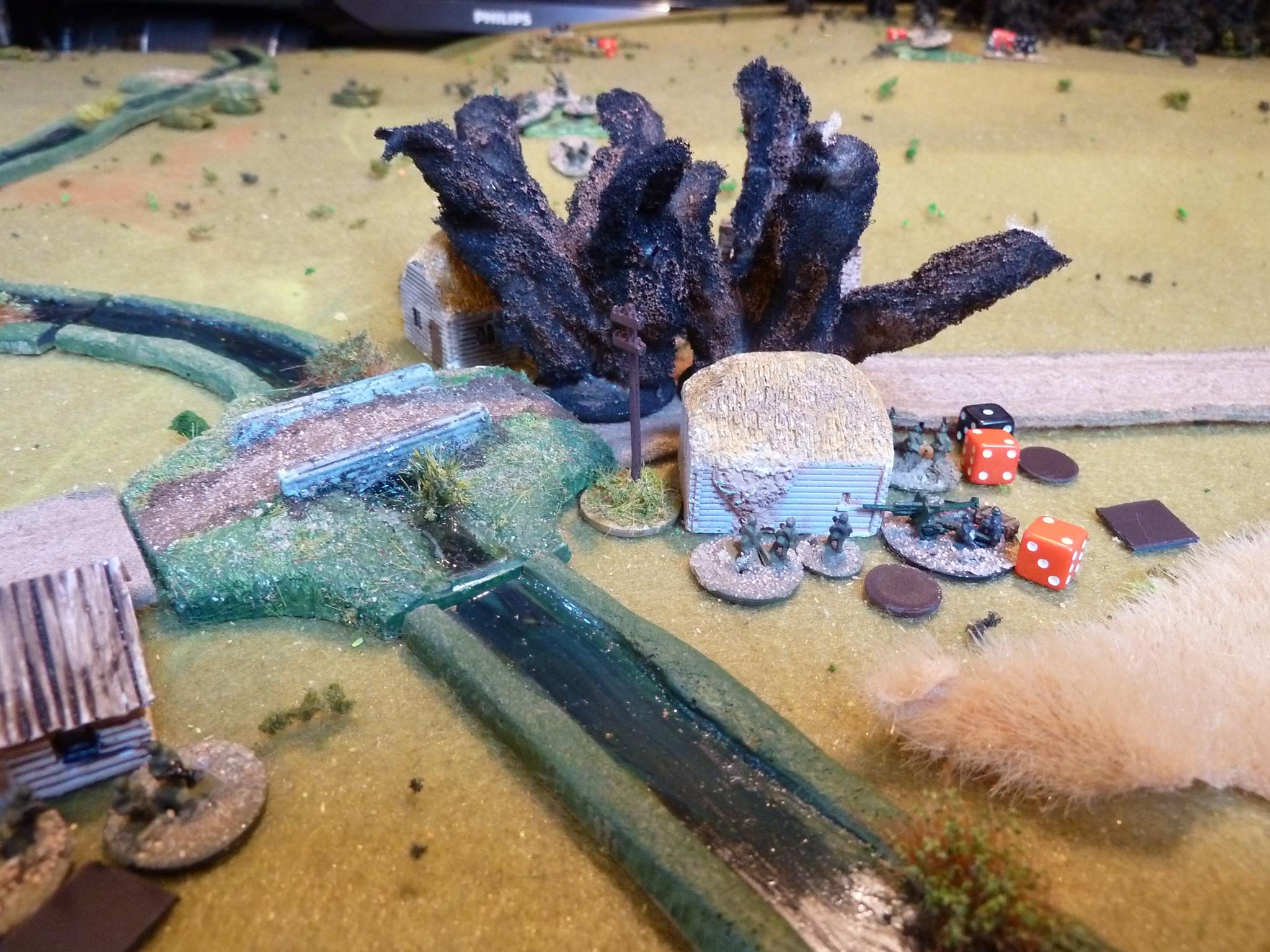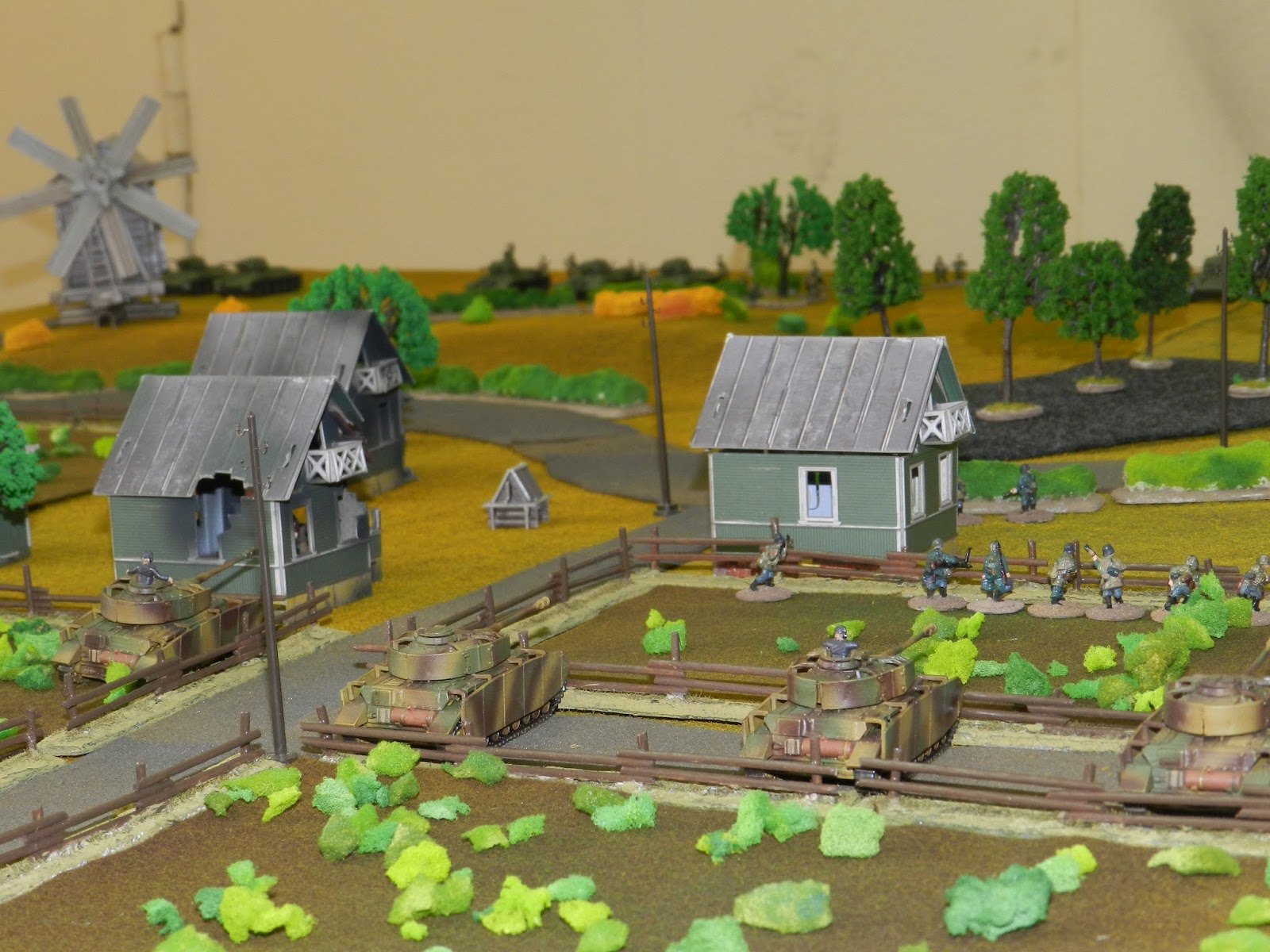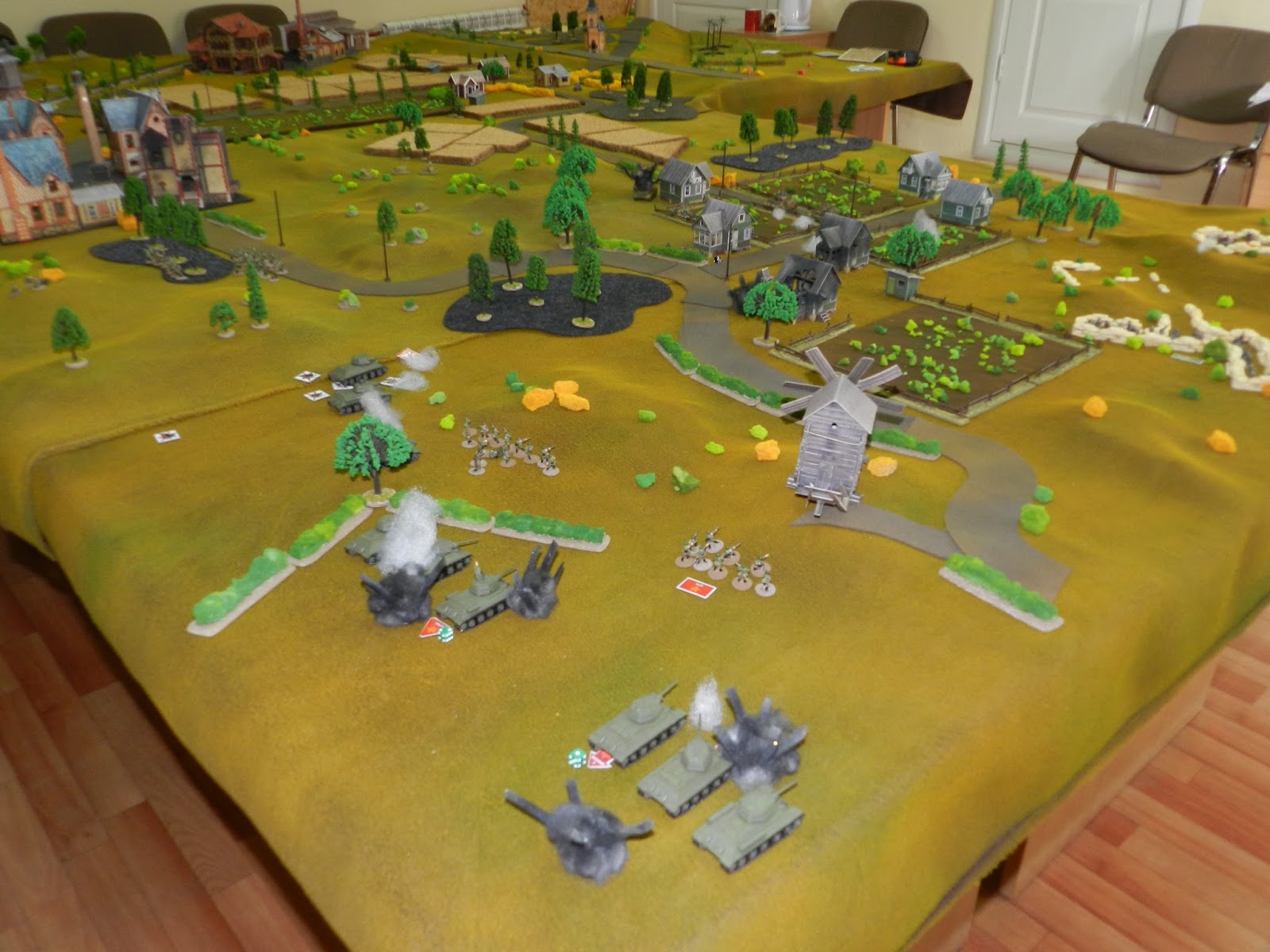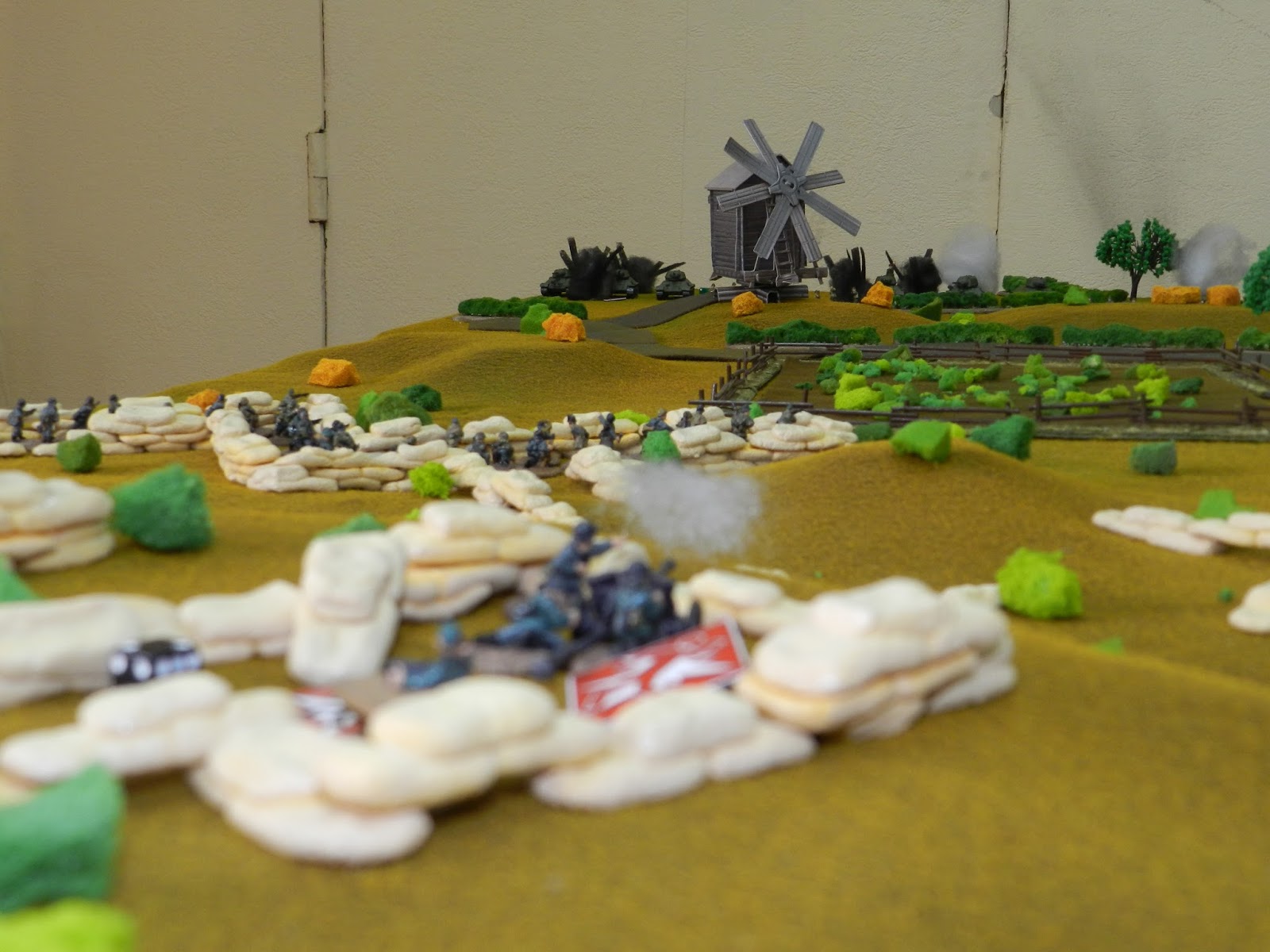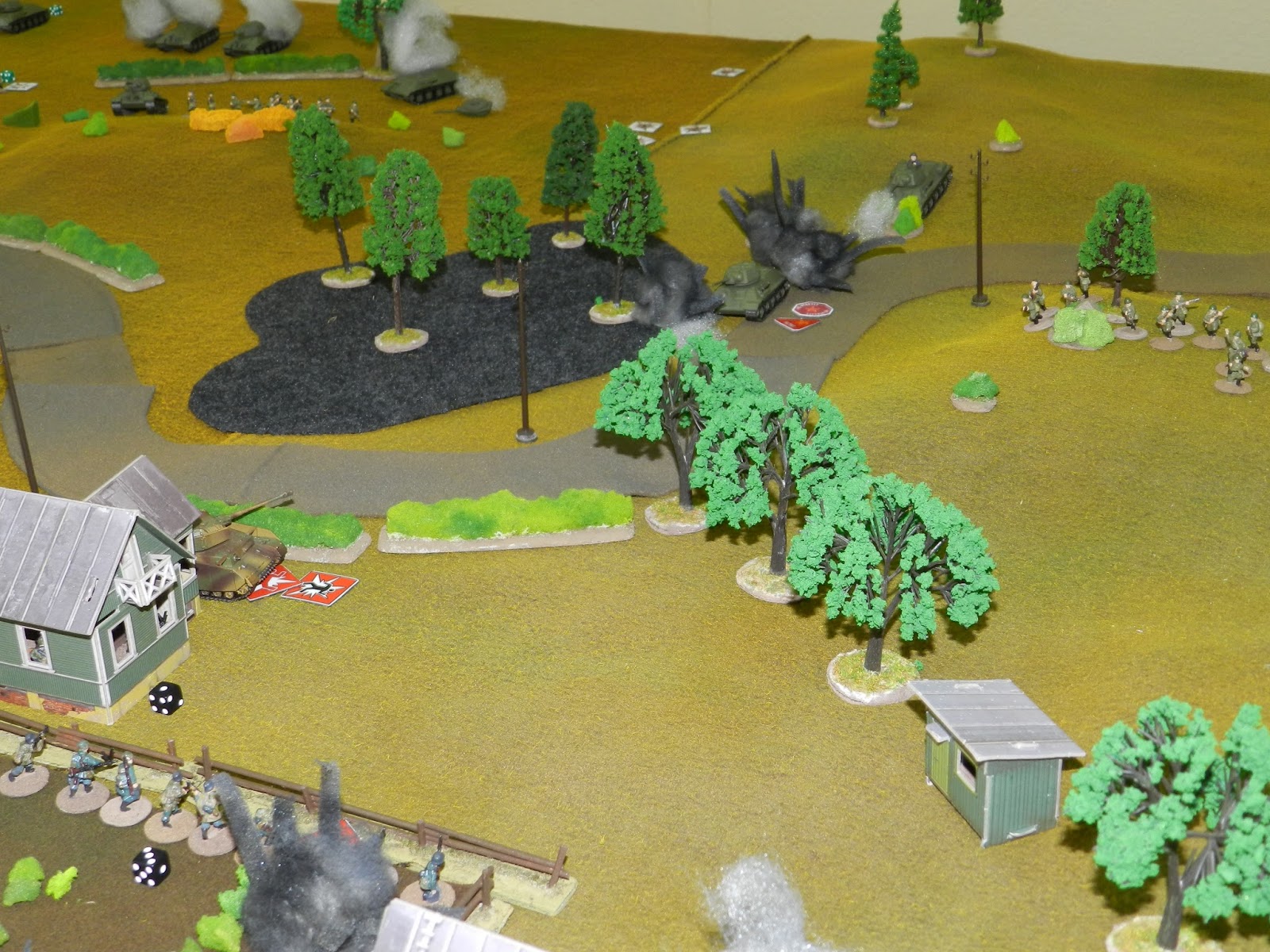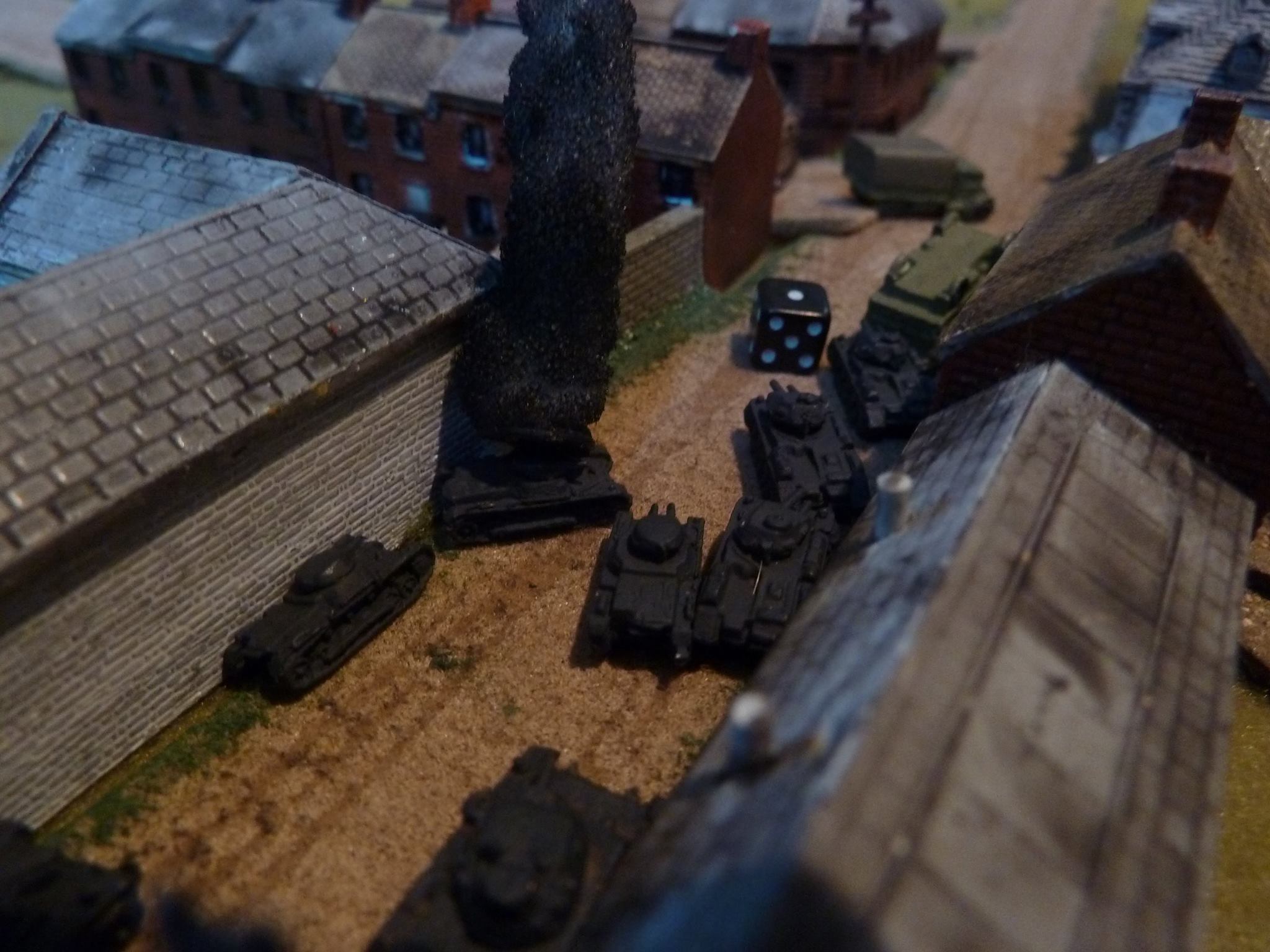Off to Edinburgh for a week to visit daughter #1 at university, and to play a game of I Ain't Been Shot, Mum! with Mr Hodge down at the South East Scotland Wargames Club. The scenario chosen was Derek's adaptation of a scenario that I wrote for the Xmas 2005 TwoFatLardies Christmas Special: Moiste Cabbage and a Quick Cognac.
The scenario is set in France in May 1940 amongst the cabbage patches that border the Moiste river. A German probe has discovered a previously unknown ford across the river is unguarded, and has dug-in to protect the crossing whilst reinforcements are summoned. The French have spotted what is going on, and dispatch Captain Cognac and his men to re-capture the ford as soon as possible.
The picture belows show the battlefield. The Germans, led by Derek and a fellow club member, would begin the game dug-in around the ford by the woods on the left. They consisted of a platoon of infantry support by a squad of engineers with a flamethrower; two anti-tank guns; and a single medium machine gun. They could also expect two lots of reinforcements to arrive at some point in the game: the first, a zug of two Panzer IV tanks; the second, another platoon of infantry, this time in half-tracks, supported by a couple of medium mortars.
I was playing the French, who would start the game around the farm to the right hand side of the picture, and had at their disposal two large platoons of infantry, each of three squads, and three Somua tanks. They could also expect two lots of reinforcements: the first, a single Char B-1 bis tank; the second, another platoon of infantry.
Those of you used to reading my battle reports might notice that the scale of things in the pictures above looks a bit different from usual. That's because the game used Derek's 10mm figures rather than my normal 15mm models. Nothing wrong with that, I hasten to add, as the ground scale of IABSM is much closer to 10mm than 15mm, but it all looked very small to me. In fact, my entire force fitted easily on the top of a chair:
Luckily I'm short- rather than long-sighted!
As a final note, Derek was using the command card modification to the basic IABSM rules that were the subject of his article in the 2017 Summer Special. This meant that both sides could draw chits that allowed units or Big Men to be activated out of the normal run of cards drawn i.e. if two French command cards appeared before the Tea Break, then I could immediately use them to activate a unit that had not yet had its card drawn. Interesting...
The Battle
Knowing Derek to be a wily player who would be seeking to delay my advance hedgerow by hedgerow, I decided to place my entire infantry force on the left hand side of the table, with the tanks in support on the road.
The idea was that half the infantry would pin half the German force (as the Bosche had to defend their entire front) whilst the rest of les gens braves charged forward to hook around the left flank of the German line. Meanwhile, the tanks would advance slowly: waiting until the infantry had spotted any anti-tank guns before deciding the best way forward.
The French 1st Platoon duly advanced forward quickly, and occupied the hedgerow overlooking the road (see picture, above). It soon became apparent that the Germans were lining the hedgerow on the other side of the road, as a hail of fire came my way. The two German squads were ten-strong good troops, each with an extra squad support weapon, and were therefore firing with five dice!
This was very bad, and despite worming their way into whatever cover was available, 1st Platoon began taking heavy casualties, not helped by a run of German cards and command chits.
As one French squad disintegrated, something needed to be done, especially as the German line was still too strong to hit with my left hook of the other French platoon and Company HQ squad. Luckily my Somuas were ready, willing and able to intervene, so No.2 Tank moved up to the corner of the road and began pumping HE shells into the German line.
The Germans did have an anti-tank rifle, but I wasn't too bothered: Somuas have good armour, and anti-tank rifles are fairly poop. This turned out to be a bad mistake, as the second shot from the damned thing must have found a weak spot in No.2 tank's armour, got inside, and taken out the entire crew!
This was getting to be just too much, but fortunately the tank had had time to Pin enough Germans for my surviving riflemen to weaken the enemy enough for my hook to go in: so the French 2nd Platoon, still under a Blind, hopped the hedge in front of them and charged forward into close combat with the battered German squad in front of them.
The Germans broke backwards, with their other squad retreating backwards from their hedgerow as well rather than staying to face two platoons of Frenchies on their own.
I couldn't let the Germans regain their balance, so French 2nd Platoon lined the hedgerow they had just attacked and poured fire at the German line as the Company HQ squad, led by Captain Cognac himself, sprinted down the side of the battlefield towards the last hedgerow by the river, where more German infantry had appeared.
Almost without stopping, Cognac led his men around the corner of the hedge and assaulted the flank of the nearest German squad. Although Cognac's squad lost three men, almost a third of its strength, the German squad broke and ran for the ford, quickly followed by the other squad, who fell back onto the other side of the river in a more orderly fashion. Bravo to Captain Cognac!
Cognac's HQ Squad drive back the right hand German squad
Meanwhile, the other two Somuas had spotted that the small house by the ford contained a German machine gun. This they pounded remorselessly until a combination of casualties and accumulated Shock forced the MMG team to retreat.
In reply, the Germans had revealed an anti-tank gun, which began shooting at the Somuas, but this was quickly masked by their own infantry as they fled back across the ford.
At this point, some German reinforcements turned up: two Panzer IVs. Fortunately, these were the early war models with a not-bad gun, but appalling armour: one was quickly taken out by the combined fire of the Somuas who, in exchange, only received a couple of points of Shock.
Retreating German troops mask their own anti-tank gun. The men closest, with all the Shock markers, are about to do the same for their tanks.
Things were definitely going my way now: I had largely driven the Germans back across the ford and taken out half their armour. When another round of fire from the Somuas took out the main gun on the surviving German tank, Derek declared that the Bosche had had enough and would retreat from the field. Victory was mine!
Commentary
A great game that was played in good spirits, with both sides taking their reverses on the chin! I was pleased that my plan had worked, despite the hard going early on, but recognised that I got lucky in the endgame when the dice certainly seemed to turn in my favour.
It was very interesting to play the game in 10mm rather than 15mm. The first thing that strikes one is the emptiness of the battlefield: using the larger figures sometimes means one feels a bit resentful that what look like dense targets don't seem to take much damage ever. Using the smaller figures, you can understand why.
Using figures that match the ground scale also means that all the distances in the game feel, well, righter somehow. It's not something I can put my finger on, but the game definitely felt better in 10mm.
On the other hand, and the reason why I'm not going to convert from my 15's, the 10mm figures are very small. I just didn't like them as much and had real difficulty quickly seeing such things as which tank was which, how many figures remaining in a squad etc. Derek's toys are lovely, but I prefer the extra characterisation and detail of 15mm figures. I guess I just prefer the aesthetics of a 15mm game. It was the same with the Franco-Prussian 6mm games I played last year: lovely, but just too small.
What I certainly won't do, however, is ever turn my nose up at a 10mm game of IABSM, and might even have a think about whether I have room to play 15mm games using a 15mm groundscale. The mathematicians amongst you will be able to help me out here, but I'm assuming that that means multiplying every measurement in the rules by 1.5. Not a total pain, but probably enough of an annoyance to put me off actually doing so!
So, in conclusion, 10mm figures felt very right...but I prefer my 15's!
Whichever, many thanks to Mr Hodge and friend for a great game and their hospitality. I might even have to visit my daughter more often: that will please her!
Robert Avery


















